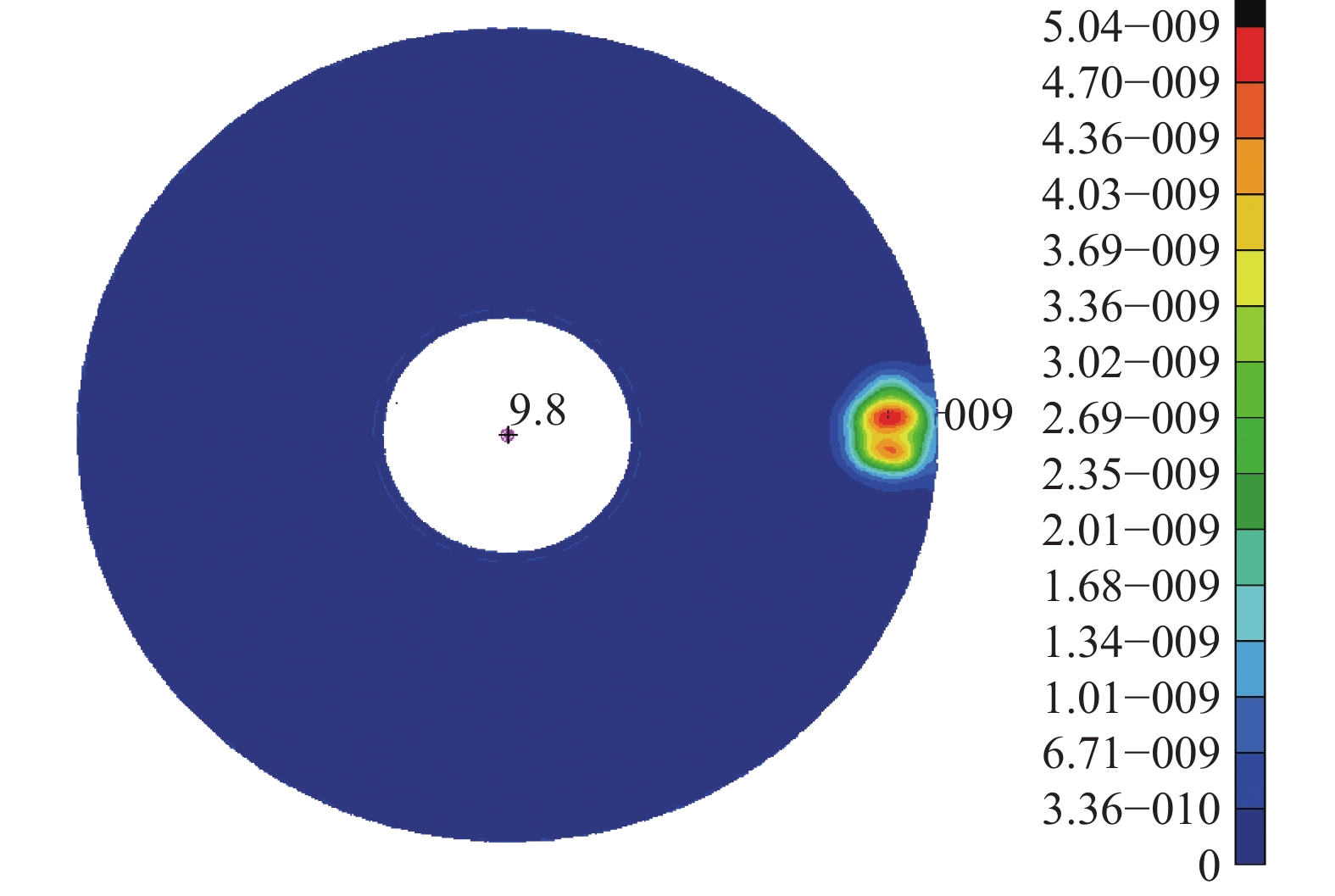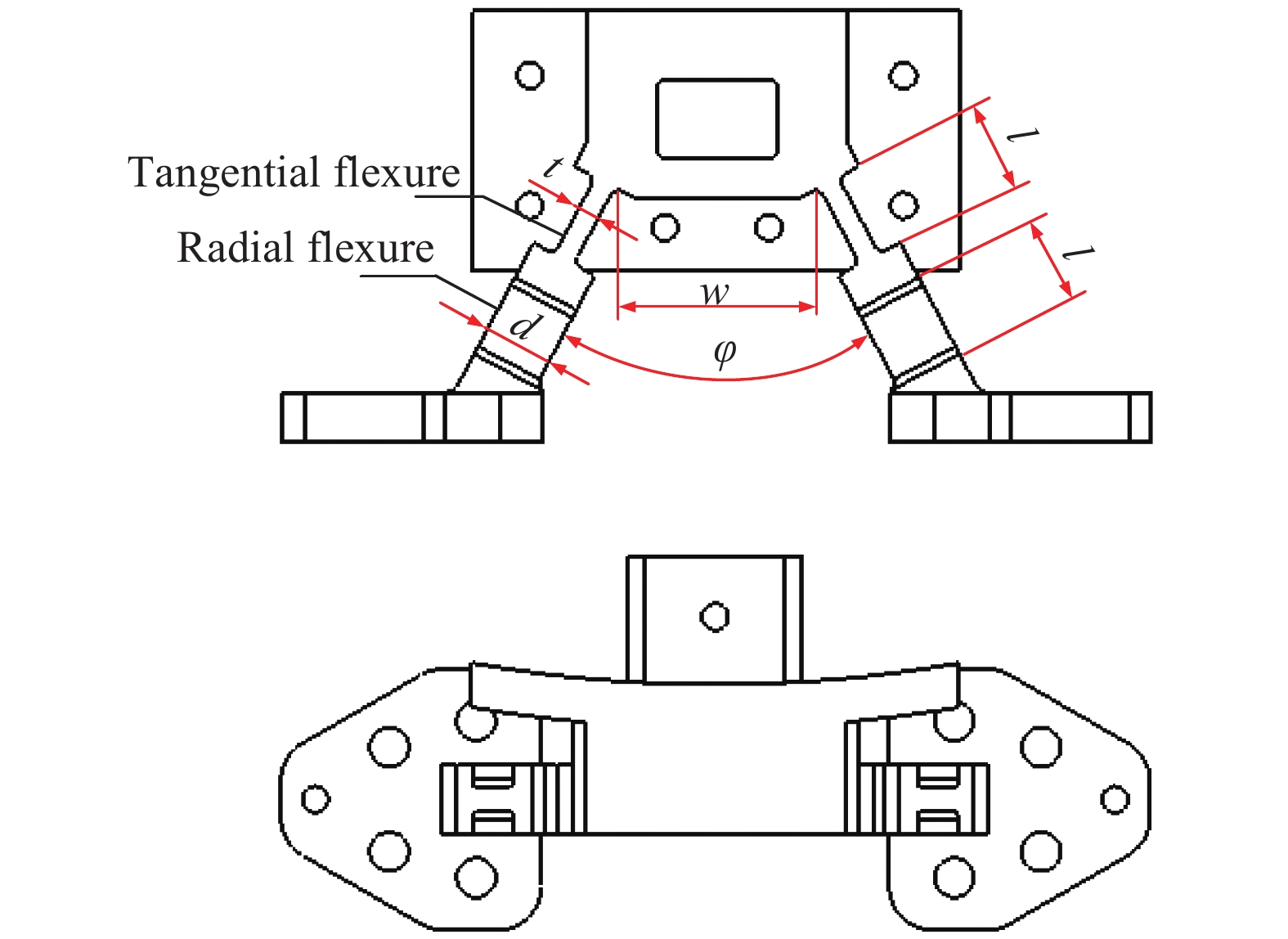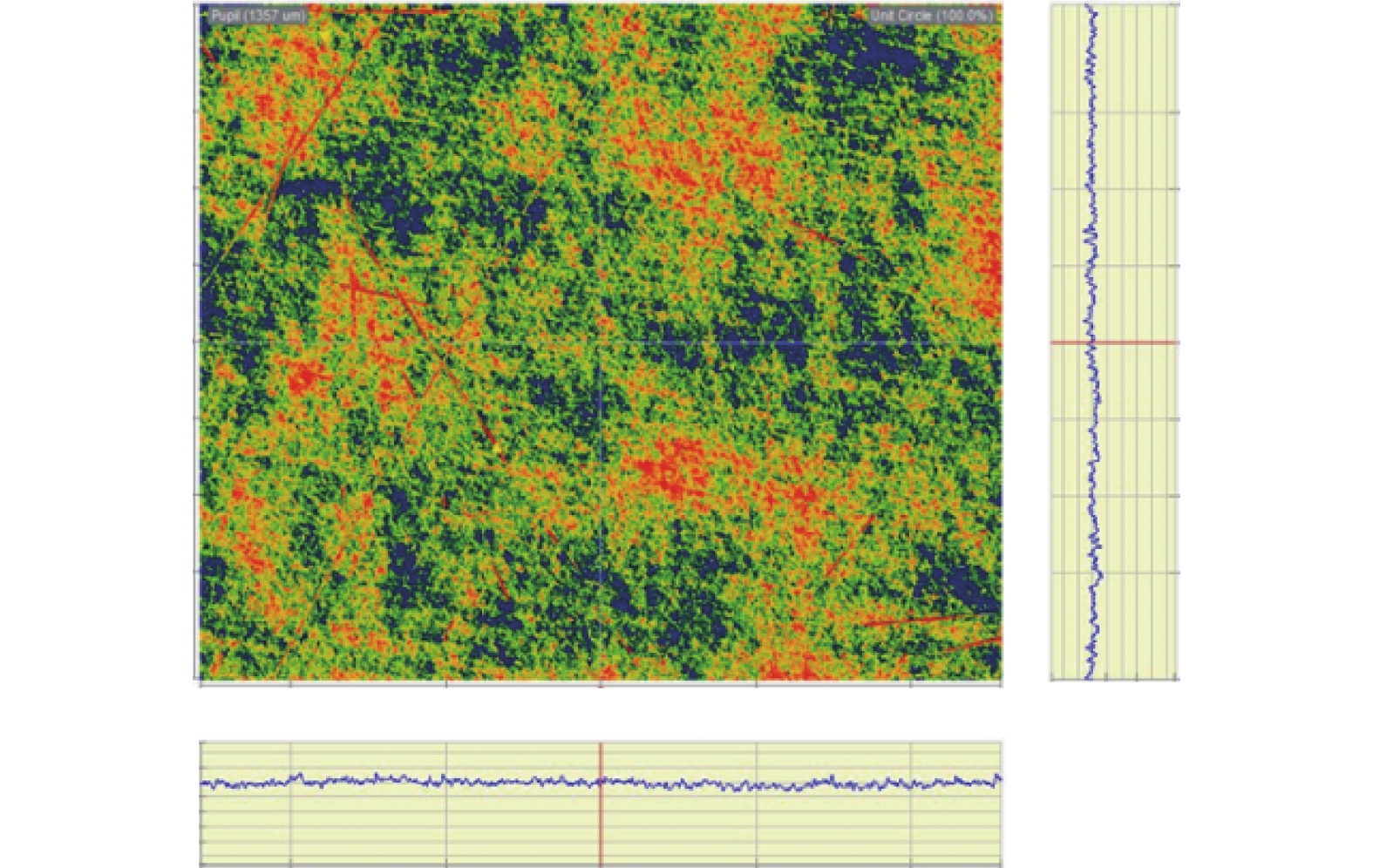HTML
-
伽玛射线暴(又称伽玛暴)是宇宙中发生的最剧烈的爆炸,数十年来,人们对其本质了解的还不很清楚,但基本上可以确定是发生在宇宙学尺度上的恒星级天体中的爆发过程。伽玛暴探测是目前天文学中最活跃的研究领域之一,能够揭示超大质量恒星的死亡过程、黑洞的形成等宇宙现象。
中法合作天文卫星(Space Variable Objects Monitor,SVOM)的主要科学目标是伽玛暴探测及余辉观测,为进一步了解伽玛暴的奥秘、探索宇宙起源等科学问题提供实测数据。光学望远镜(Visible Telescope, VT)是SVOM的有效载荷之一,主要对探测到的伽玛暴余辉进行高精度光学观测,要求其光学系统通过双波段、高灵敏度和高空间分辨率实现红移范围预估,以便于筛选满足要求的高红移候选体,有助于发现短暴的X射线和光学对应体,进一步揭示短暴的物理本质[1]。
VT探测能力设计为+22.5 MV,要求光学系统的通光效率大于70%,月光杂光的抑制能力优于1/3天光背景,80%的能量集中在2×2像元内。主反射镜作为VT的光学核心部件,要求面形精度需优于1/50λ RMS(λ=632.8 nm),反射率大于98%,镜面粗糙度小于1.2 nm,这对主反射镜组件的设计、加工和装调工艺提出了很高的要求。文中从反射镜材料选择、轻量化结构设计和柔性支撑优化等方面分析,严格控制装配工艺,并通过实际检测检验反射镜的光学性能,设计满足空间天文暗弱目标探测的反射镜组件。
-
VT望远镜系统选择Ritchey Chretien加校正镜的光学结构,由主反射镜(Primary mirror)、次反射镜(Secondary mirror)、校正镜(Corrective lens)和分光棱镜(Dispersion prism)组成,如图1所示。光束通过主次镜校正球差和彗差,通过校正镜校正其他轴外像差,最后通过分光棱镜分别汇聚到红波段和蓝波段焦面上。光学系统采用小F数的主反射镜设计,有效压缩了望远镜系统规模。
-
空间相机反射镜面形误差不仅要满足光学设计要求,还要求质量足够轻。基于对空间恶劣环境的考虑,轻量化反射镜的镜体材料应具备以下特点:比刚度大、热膨胀系数小、尺寸稳定性好、抗辐照性好、易进行光学加工、易镀膜、热性能及力学性能具有各向同性、成本尽可能低等。制造空间光学反射镜片常用的轻质材料有铍、微晶玻璃、熔石英及碳化硅等,表1归纳了几种常用空间反射镜材料的性能参数。
Be Zerodur ULE Fused
silicaRB SiC Density/g·cm−3 1.85 2.53 2.21 2.19 3.1 Modulus/GPa 303 92 73 72 391 Poisson’s ration 0.043 0.24 0.17 0.17 0.25 Thermal conductivity/W·m−1·K−1 216 1.46 1.4 0.5 120-170 Expansion coefficient/K×10−6 11.4 0.05 0.03 2.9 2.5 Table 1. Commonly-used space mirror material property
从表1中不难看出,Zerodur、ULE和Fused silica等玻璃材料虽然线胀系数较小,但比刚度低,Be的综合性能较高,但铍粉末毒性大,不利于光学加工。
SiC材料的比刚度大,相比玻璃材料能够达到更高的减重比,具有良好的热传导性能,热变形系数较小,具有优异的制备性能,加工工艺成熟,能够实现形状相当复杂的镜坯成型。SiC材料以其优异的物理性能和良好的工艺性能,正逐渐成为最具发展前途的新型轻量化反射镜材料[2]。综合考虑材料的性能和加工工艺,选择SiC材料制造VT的主反射镜。
-
主反射镜组件研制流程如图2所示,首先确定主镜组件的整体结构方案,如图3所示,综合考虑SiC材料加工工艺特性、自重形变、光学加工形变等要求进行反射镜高轻量化结构设计;然后选择适当的支撑方式并对柔性支撑进行参数优化设计,采用与支撑热膨胀系数接近的铝基碳化硅高刚性材料设计高轻量化背板,对主反射镜组件进行有限元分析,自重和热变形满足设计要求后进行微应力装配;最后利用干涉仪对主反射镜组件进行面形检测验证设计结果。
1.1. 光学系统设计
1.2. 主镜材料选择
1.3. 主反射镜组件研制流程
-
航天反射镜在自重、加工和装配过程中都可能发生变形,影响成像质量,因此需要对主反射镜进行合理的轻量化设计,使其在满足质量约束条件的同时具备足够的刚性。反射镜的刚性在材料确定后主要取决于径厚比及轻量化网格结构。
合理的径厚比能够在保证反射镜刚度的基础上最大限度地减轻反射镜重量,Roberts等人通过对反射镜径厚比与自重变形之间关系的研究,归结出径厚比dr与自重变形
$ {\mathrm{\delta }}_{\mathrm{g}} $ 之间的经验公式[3]:式中:
$ \rho $ 为镜坯材料密度;$ E $ 为镜坯材料弹性模量;g为重力加速度,要求反射镜的镜面变形量$ {\mathrm{\delta }}_{g} $ 小于1/10λ(λ=632.8 nm),径厚比应大于7.5。在光学加工过程中,为了使轻量化反射镜单个蜂窝单元的最大变形量小于允许值,保证加工区去除量一致,镜面
$ {t}_{f} $ 必须具有一定的厚度,由Vukobratovich的经验公式可知[4-5]:式中:
$ P $ 为反射镜光学加工时磨头对镜面的压强;$ \psi $ 为与轻量化孔相关的形状因子,其中$ {\mathrm{\psi }}_{\mathrm{t}\mathrm{r}\mathrm{i}}= 0.001\;51 $ ;B为轻量化孔内接圆直径;$ \mu $ 为镜坯材料泊松比;E为镜坯材料弹性模量。反射镜光学加工时施加的压力约为80 kPa,轻量化三角形蜂窝内接圆直径为16 mm, 碳化硅镜坯力学性能参数见表1。要求使$ {\mathrm{\delta }}_{\mathrm{m}} $ 小于1/10λ(λ=632.8 nm),镜面$ {t}_{f} $ 应大于1.6 mm。为进一步提高轻量化率,反射镜减薄了边缘厚度,通过4 mm厚度的加强筋减小边缘变形量。光学加工时通过适配的托盘支撑边缘以减小镜面变形量,Φ40 mm口径的磨盘施加100 N的力在主镜边缘部分,通过有限元分析主镜在此加工状态下的最大变形约为5 nm,小于1/10λ(λ=632.8 nm),满足光学加工要求,如图4所示。
通过上述计算与分析,VT主反射镜物理口径450 mm,通光口径440 mm,厚度60 mm,镜面厚度7 mm,轻量化孔直径16 mm,加强筋厚度3 mm。主镜与柔性支撑配合面为直径320 mm的圆柱面,通过方孔配合保证形位公差,主反射镜实物如图5所示。
-
高度的轻量化提高了反射镜的比刚度,却使其结构绝对刚度下降,因此镜面对重力和热应力的敏感度也迅速增大,由此合理地设计反射镜支撑结构是空间相机轻量化反射镜组件设计的难点。
空间相机轻量化反射镜常采用中心支撑、周边支撑和背部支撑等方式[6-7]。VT相机碳化硅主反射镜口径中等大小,由于采用了边缘轻量化结构,采用周边支撑不会增大反射镜组件的径向尺寸,且周边支撑具有装配简单、定位精度高等优点。因此主反射镜采用侧面三点支撑方式,既约束了所有的自由度又不会过定位,支撑结构中采用的柔性环节减小了反射镜装配应力以及反射镜与支撑结构之间的热膨胀系数不匹配造成的热应力。支撑结构材料选用钛合金,能够保证柔性结构的加工稳定性,同时其高屈服极限能够保证柔性结构在发射环境下的安全性[8-11]。
考虑反射镜力学环境以及两脚架设计参数-柔性节长度l,宽度d,厚度t,两脚架最小距离w和两脚架角度φ,如图6所示,对反射镜面形影响的敏感度,如图7所示,对以上参数进行了综合优化,如表2所示,最终优化结果为l=10 mm,d=8 mm,t=1.5 mm,w=21 mm,两脚架角度φ=56°。
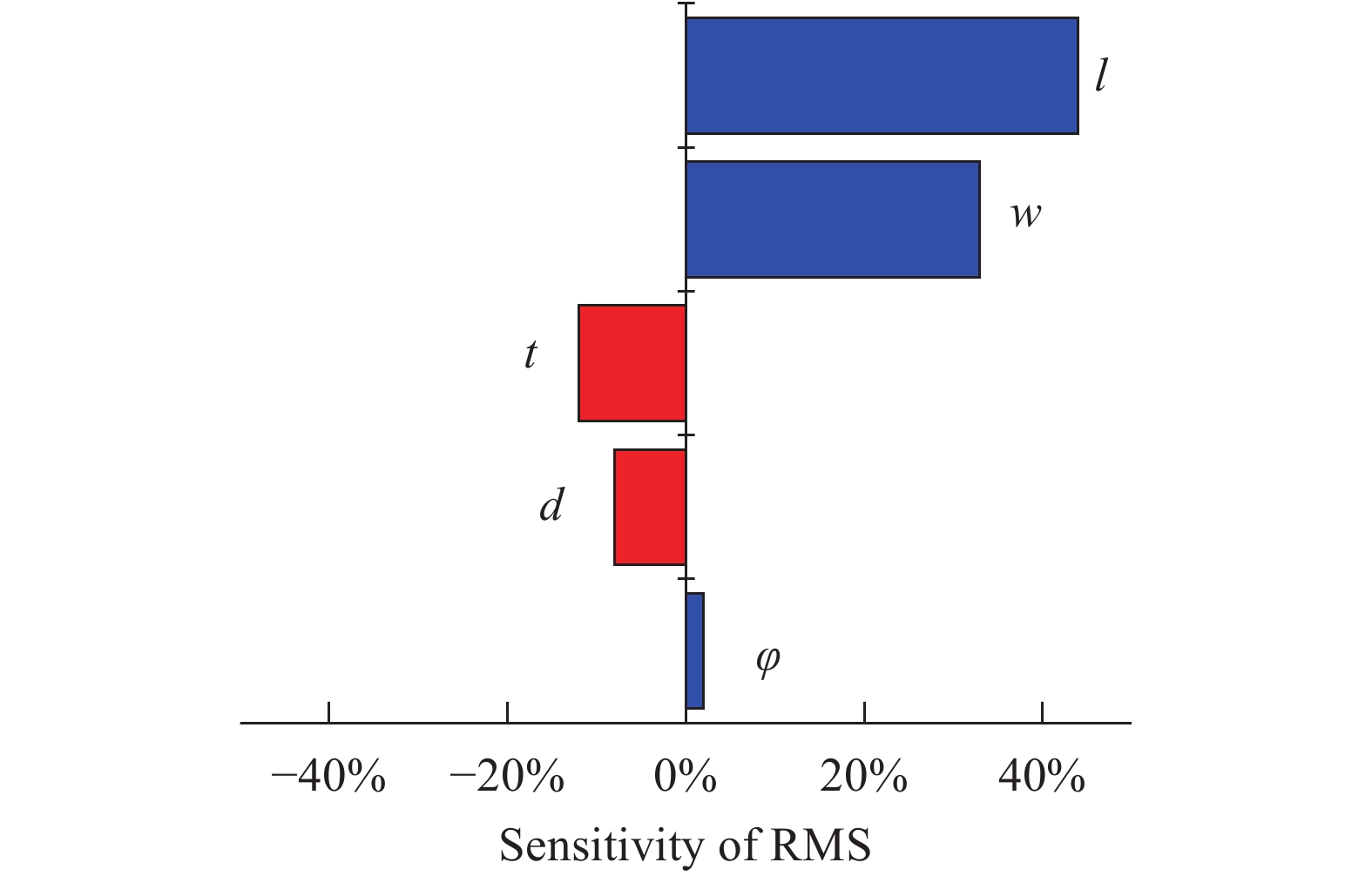
Figure 7. Effection of the variation of bipod flexure dimension parameters on surface error of the primary mirror
Parameters Ranges Steps Optimization results L/mm 5-20 0.2 10 w/mm 5-15 0.2 8 t/mm 1-2 0.1 1.5 d/mm 10-25 0.5 21 φ/(°) 40-120 2 56 Table 2. Optimization results of flexure support parameters
主镜背板是VT的关键组件。它同时也是整个相机(包括主镜组件,承力筒组件,后光学系统组件等)的支撑部件。为保证相机的性能,背板必须具备强度高、刚度高、热膨胀系数小和稳定性好等特点,同时还需要满足相机整体质量的限制。因此背板选用铝基碳化硅材料,密度较钛合金低三分之一,弹性模量接近钛合金的两倍,通过螺钉连接主镜柔性支撑,支撑板设计为不等厚背部开孔轻量化形式,如图8所示。
-
柔性支撑与镜体通过加工及装调工艺保证0.2 mm胶粘间隙,采用3M 2216环氧结构胶粘接。支撑与主镜粘接面积约为2 000 mm2,结构胶剪切强度约为6 MPa,主镜质量为7 kg,以安全因子取4计算,可经受428 g加速度,具有很高的安全裕度。
如图9所示,在结构设计上保证两脚架中心与反射镜质心水平面重合,使支点出现在反射镜中性面上,避免力矩耦合到反射镜上[12-14],根据有限元分析,此时泽尼克系数Z5为0,因重力造成的面形误差引起的像散最小。装配完成后的主镜组件如图10所示。
-
对主镜组件与铝基碳化硅背板进行一体化分析,验证整体设计结果。将背板与桁架安装点固支,背板与柔性支撑通过螺钉连接约束,支撑与反射镜间胶层厚度0.2 mm,采用面与面黏结约束。对主镜组件分别施加1 g垂直于反射镜光轴的重力载荷和2℃整体温度变化,有限元分析结果如图11所示。
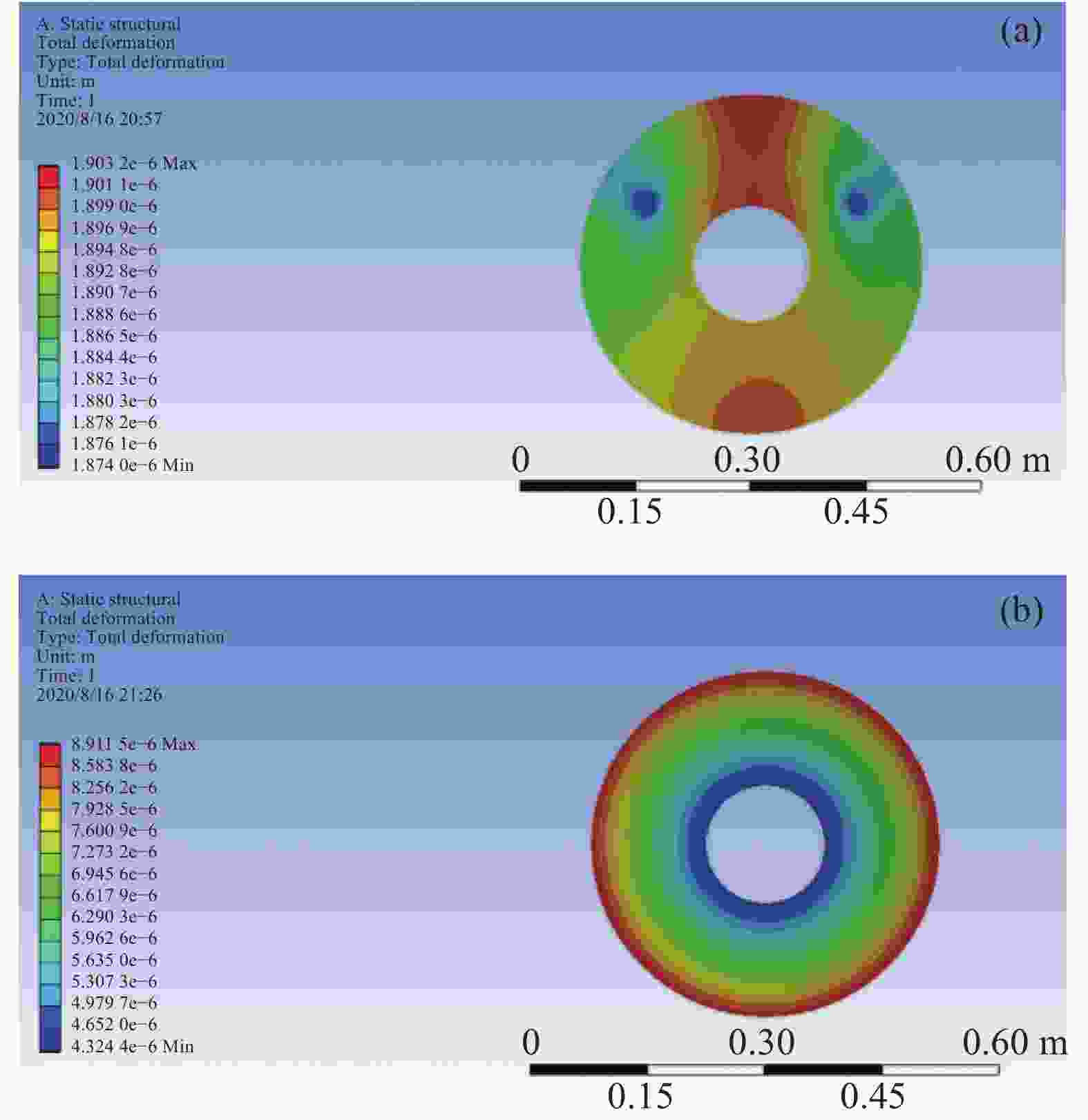
Figure 11. Finite element analysis results of the primary mirror assembly. (a) Optical surface deformation due to 1 g gravity; (b) Optical surface deformation due to 2 ℃ temperature
在1 g重力载荷作用下,主镜面形变化PV值为23.4 nm,RMS值3.8 nm,最大刚性位移1.4 μm;在2 ℃整体温度变化载荷作用下,主镜面形变化PV值为26.5 nm,RMS值为4.5 nm,最大刚性位移1.3 μm,曲率变化0.05 mm。均远优于光学设计要求。主反射镜组件的一阶频率340.6 Hz,满足卫星及载荷的设计要求。
3.1. 柔性支撑及背板结构设计
3.2. 主镜组件装调
3.3. 主镜组件仿真分析
-
文中根据中法合作天文卫星VT光学相机载荷任务对光学反射镜的高反射率、高面型精度和低粗糙度要求为输入,设计了主反射镜组件并进行加工与装调,检测结果表明主镜镜面粗糙度优于1.1 nm,装配后的主镜面形误差优于1/60λ RMS(λ=632 nm),均能满足光学设计要求,证明了主镜组件整体设计合理,对类似的轻型反射镜组件的设计具有一定的借鉴和指导意义。



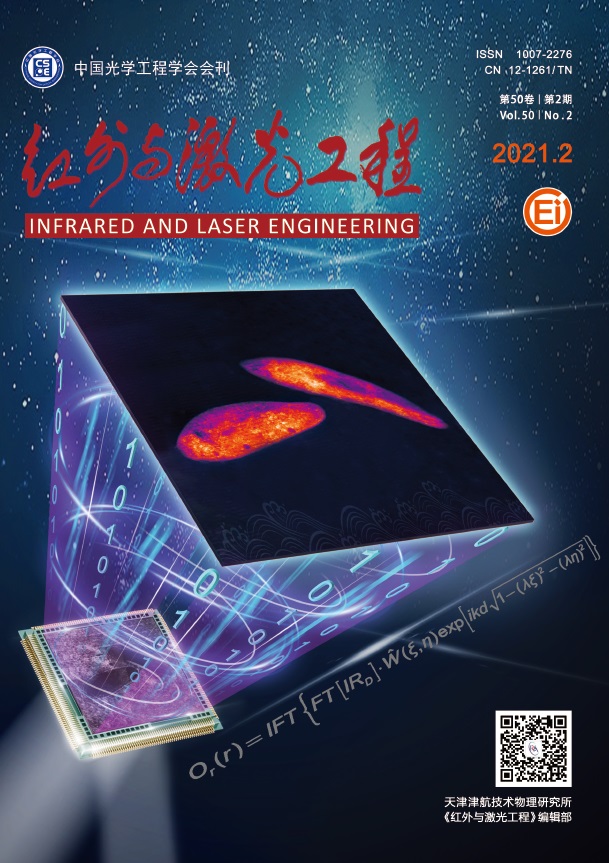





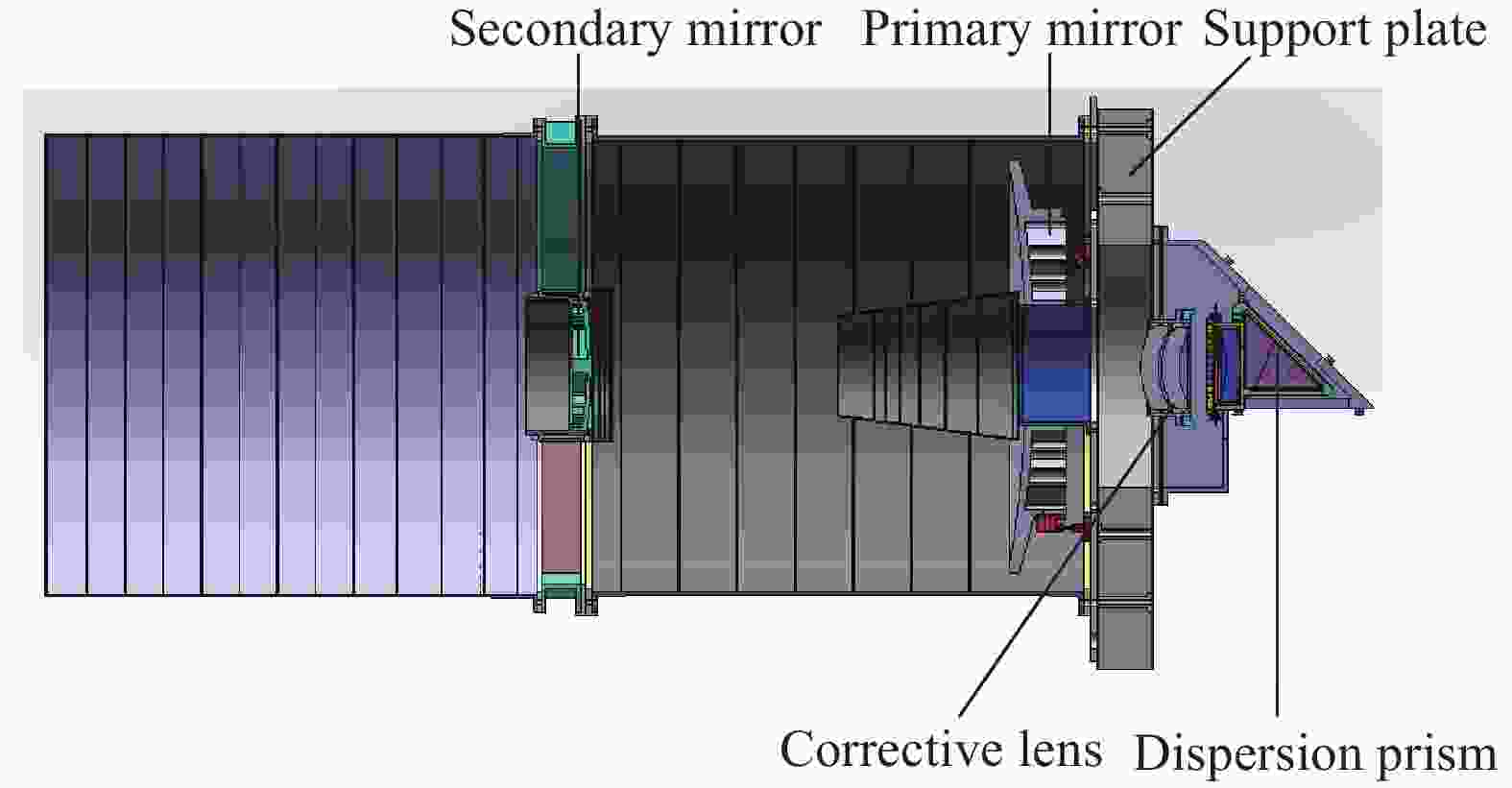













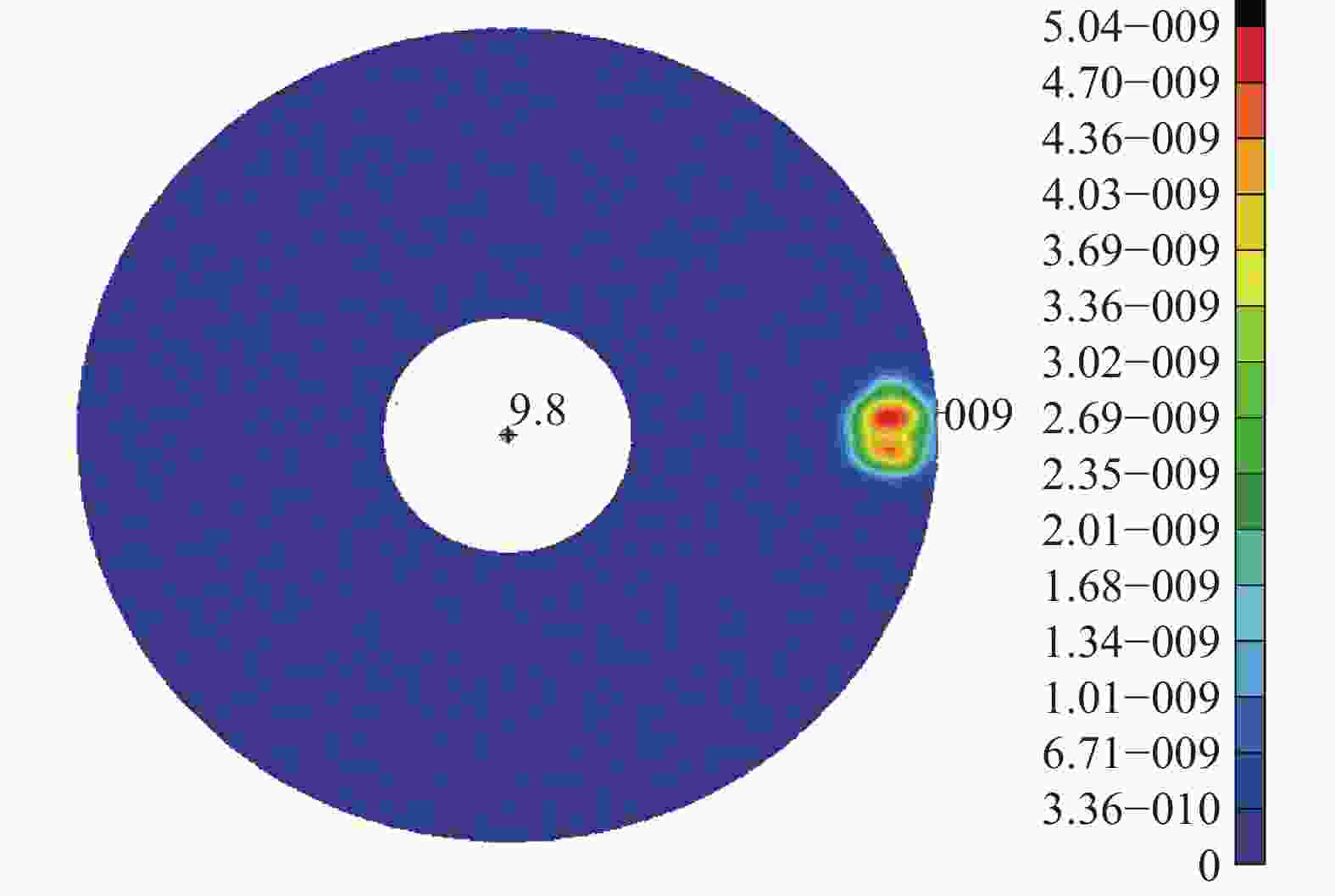

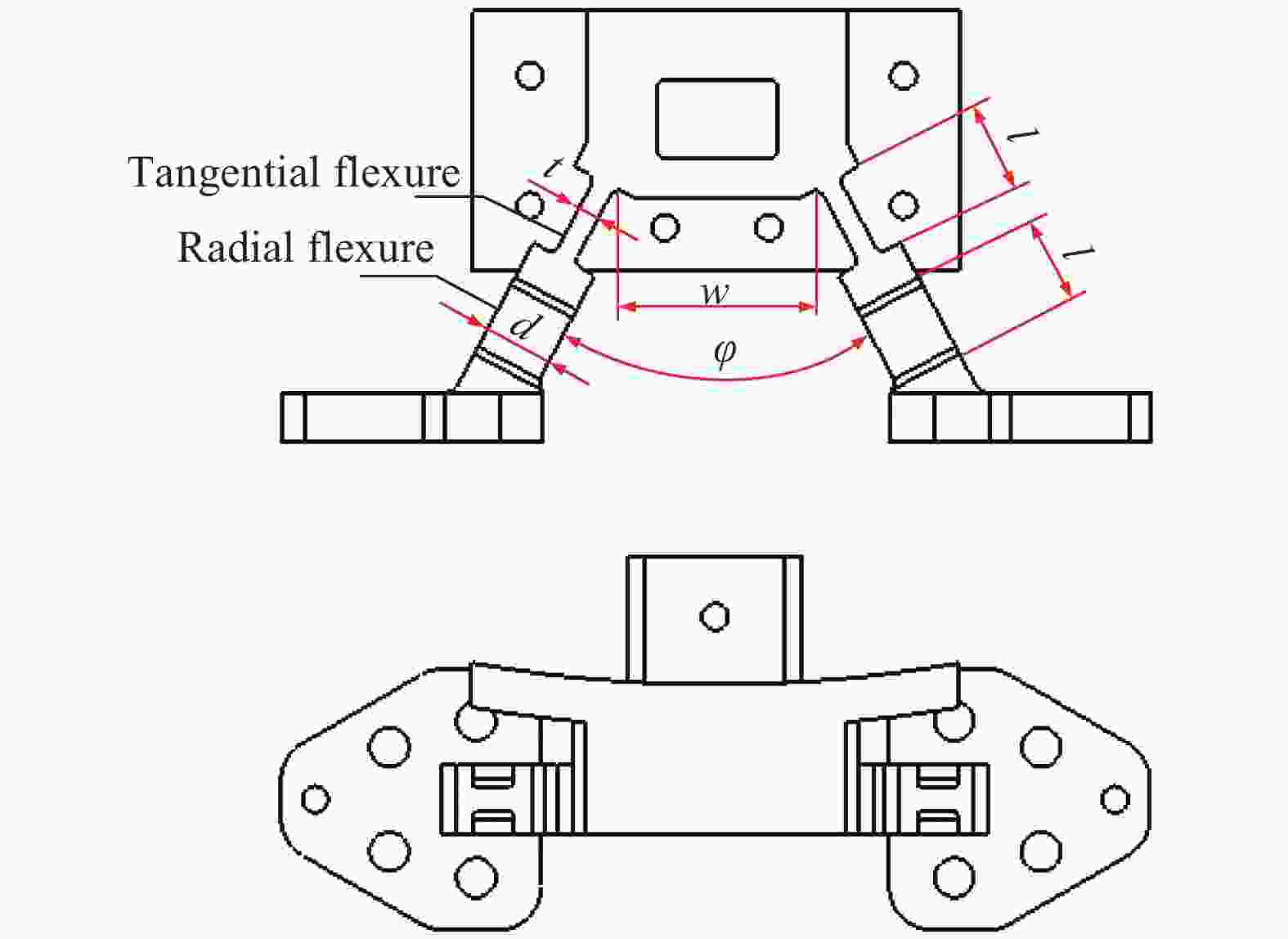







 DownLoad:
DownLoad:


